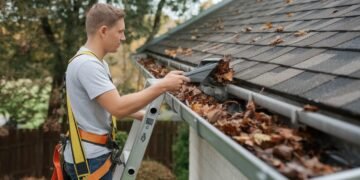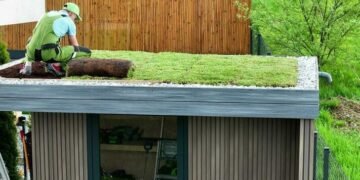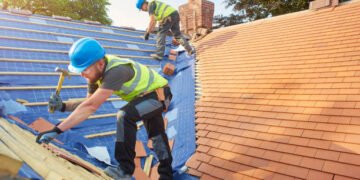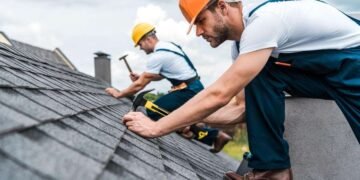Everyone knows that high temperatures can lead to high utility bills, but many might not realize that their roof is a big piece of it. Traditional roofs tend to absorb a lot of heat, leading to a much warmer house. Another type of roof that can help alleviate this issue and help make your home more energy-efficient is a cool roof.
These energy-efficient roofs are designed to reflect sunlight and absorb less heat than traditional roofs, reducing energy costs significantly. Here’s everything you need to know about why cool roofs may be a good idea for your home and just what they can do.
What are the Drawbacks of Regular Roofs?
As mentioned above, regular roofs can get quite hot. This heat increases the wear on the roof, which leads to additional maintenance costs. On a daily basis, this extra heat means your air conditioner will have to work harder, increasing your energy bills even if you have good home insulation.
Additionally, when combined with other dark roofs in a densely populated area, you may be living in an “urban heat island.” This phenomenon is when the temperatures in an urban area are higher than more rural areas due to the amount of heat absorbed by infrastructure.
What is a Cool Roof?
Cool roofs are specifically made to reflect more sunlight than traditional roofs, reducing the amount of solar energy absorbed. This in turn decreases temperatures inside the building, just like light-colored clothing does outside. That said, some companies can install a darker roof with much of the same benefits.
The advantages of cool roofs include:
- Lower air conditioning costs – because less heat enters the building, you don’t need as much AC to keep it comfortable.
- Reduced wear and tear on HVAC systems – with a cooler interior, heating and cooling units won’t have to work as hard to maintain a steady temperature.
- Reduced wear and tear on the roof – these roofs last longer and require less maintenance than regular ones, meaning even greater savings over time.
- Improved comfort levels – since it’s not as warm inside, occupants will be able to work or relax without feeling too warm or uncomfortable.
Cool Roof Types
There are a few different types of cool roofs, though they operate along the same line of thinking. The options range from green roofs (roofs covered with plants) to coated roofs (regular roofs with a special coating that helps them reflect more sunlight). In most cases, people are referring to a whole new roof made with materials that better reflect the sun.
How Does a Cool Roof Save Money?
Since a cool roof absorbs less heat from the sun, you don’t need to use as much energy with a building’s air conditioning. This can result in lower utility bills on top of the savings from not having to maintain your AC and roof as frequently.
Another way cool roofs can save money is if you qualify for any government energy-efficient incentives. Different states and cities have different programs, but in some cases, you may get reimbursement for your cool roof installation.
Installing a cool roof is an excellent way to save money in both the short and long term while also contributing toward sustainability initiatives. You’ll enjoy lower utility bills and potential rebates from government programs while also helping protect your home or business from damage due to extreme UV rays.
Who Benefits the Most From Cool Roofs?
Those living in hot climates like desert regions, coastal cities, or tropical areas are in the ideal environment for cool roofs. Colder climates tend not to be as suitable for cool roofs, as heating systems will have to work harder to keep a home warm in the winter, potentially offsetting any savings from the summer.
If possible, it’s also more cost-effective to have a cool roof installed from the start (if you’re having a new home constructed) or replace a roof that must be replaced anyway. Replacing a perfectly good roof just to have a cool one is a somewhat expensive decision, just as replacing a good roof for another standard one would be.
Cool roofs also have environmental benefits that make them an attractive choice for conscious homeowners. These effects are most noticeable when many homes in a community have cool roofs, but can include lessening the urban heat island effect and reducing strain on the power grid.
Final Words: Stay Comfortable & Save Money With Cool Roofs
Installing a cool roof can pay off in the long run, thanks to what you may be saving on energy bills and roof maintenance. These energy-efficient roofs are an excellent option for those looking to save on utilities and help conserve energy in their community. For all these benefits, knowing your climate and financial situation is important before deciding to take the big step of changing your roof. If a cool roof sounds like a good fit, then get ready for savings!
Recommended Posts:














